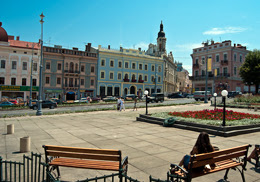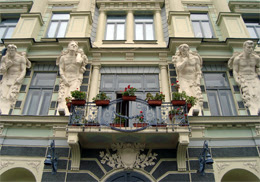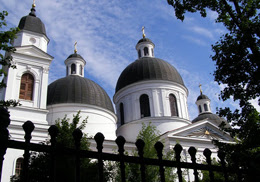We offer our guests to plan their time in Chernivtsi and choose the excursions they like. A list of our tours will let to enjoy everyone the city of Chernivtsi.
Chernivtsi tours with local private guide
Our guide in Chernivtsi will pick you up from your hotel and show you the city.
We offer all kinds of Jewish tours in Chernivtsi. Research of graves of your relatives, sight-seeing, surroundings of Chernivtsi by car and many more. We are super flexible.
Private tour in Chernivtsi with an English-speaking guide for 15 EUR/hour
Excursion Residence of Bukovynian Metropolitans
The excursion includes visiting the monument of national significance built in the second half of the XIX-th century according to the design of the Austrian architect Joseph Hlavka. It’s a masterpiece of ancient Chernivtsi which is reasonably considered an architectural landmark of the city – the former residence of the Orthodox Metropolitans of Bukovyna and Dalmatia built in 1864-1882.
The entire Residence ensemble strikes with its unusual look, resembling a medieval castle. The guests will have an opportunity to see the seminary building, the Church of the Three Prelates, palace and park of the metropolitan; they will see the Marble Hall, renovated after the fire of 1944, authentic wall-paintings by E. Maksymovych and E. Buchevsky.
Visiting the former residence is the moments of harmony of the spirit and the heart, touching the eternal everlasting beauty.
Duration: 2 hours;
Price: 35 Euro
Chernivtsi Old City walking tour
Private sightseeing tour along historic part of Chernivtsi. It will take you 3 hours and 3 km of walking. Your private guide will meet you in your hotel in Chernivtsi (or some other place, as agreed).
Tour begins in the oldest part of the city – the Turkish square situated nearby the former Holy Cross square. Then you will visit the main squares of Chernivtsi – Philharmonic, Central, Cathedral, Theater and walk along the ancient streets that have preserved historic buildings, – Golovna, Kobylianska, Universytetska and others. The tour ends at the former residence of Metropolitan of Bukovina and Dalmatia.
During the tour you will get acquainted with the history and the urban environment of a bygone era of Chernivtsi, see the best examples of European architecture of the XIX-XXth cent., including:
- former Residence of Bukovynian Metropolitans – gem of Chernivtsi, built in 1864-1882, included the World Cultural Heritage UNESCO;
- The Olga Kobylianska Theater of Music and Drama – creation of Viennese architects Felner and Helmer that adorns the Theater square since 1905;
- the Town Hall, which stands since 1847 remains the seat of municipal government;
- the building of Art Museum – one of the most exquisite monuments of modernism, which appeared on the Central Square in 1901 as a representative of savings banks;
- Armenian Catholic church built in 1875, designed by Josef Hlavka, where now is Organ Hall of Chernivtsi Philharmonic;
- Cathedral of the Holy Spirit – the main Orthodox church of Bukovina, consecrated by Metropolitan Eugene Hakman in 1864.;
- regional administration building, built in 1906 as the Palace of Justice with two lions on both sides of the entrance. It’s also known as “house of lions”;
- Church of the Exaltation of the Holy Cross – the first stone temple Chernivtsi downtown that was built on the same area in 1814.;
- house-boat, which from the late XIX century. as like floating among the streets of Chernivtsi.
Duration: 3 hours;
Price: 45 Euro
Jewish Chernivtsi Tour
The tour shows the city visitors the architectural and historic legacy of a numerous Jewish community that lived in the city during the XIX-th and XX-th centuries.
It includes the former Jewish House on Theatre Square, the building of the old synagogue and the hospital in Barbusse Street, orphanages, senior citizens’ houses and asylums for poor Jews, family and home synagogues, pray-houses, houses of Jewish communities and the educational center Toynbikhalle in Turetska Street, commemorative token in memory of Jews, prisoners of Chernivtsi ghetto of 1941 in the Square of Turkish Well, modern Jewish school # 41 and Charity Fund ” Khesed Shushana”, Jewish cemetery in Zelena Street and others.
The visitors will have an opportunity to visit the functioning synagogue in L. Kobylytsia Street with its kosher diner and mikvah.
Duration: 2 hours;
Price: 35 Euro
Churches and Temples of Chernivtsi Tour
Religious tolerance proclaimed during the Austro-Hungarian rule is embodied in big and small temples of world religions. This is a living contemporaneity of Chernivtsi residents.
Tourists will see the Holy Spirit Orthodox Cathedral, St. Peter and Paul’s Catholic Armenian Church, Dormition of Virgin Mary Greek-Catholic Church, St. Michael’s Cathedral, St. Nicholas’ wooden church which was built in the XVIII-th century, Saint Parascheva’s Church, Exaltation of the Cross Roman-Catholic Church, Grosshyl synagogue, a number of smaller icon shelves hiding in the elegant streets of the city. It goes without saying that the guests will also visit the former residence of Bukovynian Metropolitans.
Slim spires, cupolas and towers create a unique silhouette of the city located on the upper terraces of the right bank of the river Prut.
Duration: 2 hours;
Price: 35 Euro
Chernivtsi private guide
Experience Chernivtsi through the eyes of a local private guide!
Chernivtsi is one of a must see city in Ukraine. The city is quite old and a few years ago has celebrated its 600th anniversary. Here you will find an interesing mix of antiquity, modern architecture, buried in green streets, unimaginable number of colors. And one more important moment – in Chernivtsi, you walk the streets only up or down!
Our guide will meet you in Chernivtsi and organize wonderful sightseeing tours.
You will have a nice time in Chernivtsi.
Our benefits:
- Our guide is local, living in the same area as the tour
- All Tours are PRIVATE, only you and people you choose
- Our services are priced PER TOUR, not PER PERSON. However, there may be a ‘per person’ price component if the tour involves external costs such as admission tickets, accommodation etc.
- You can both walk and have sightseeing tour by car/bus/van
- Our Chernivtsi tours are totally flexible. You can choose what you like
Important:
We can take care about you during all you staying in Chernivtsi (Ukraine). In addition to tours, we offer full assistance in your journey:
- info
- tickets
- meeting
- hotel
- meals
- entertainment
- constant support of your private guide
Meet your guide in Chernivtsi
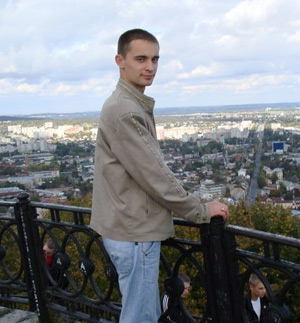
Vasyl
Hi! I’ll be your guide in Chernivti and do my best to show you the beauty of “Ukrainian Paris”.
You will have a good time in Chernivtsi!
Chernivtsi. Overview
The city of Chernivtsi, with a population of about 252 thousand people, is situated in Western Ukraine, and is the administrative and cultural center of Ukrainian Bukovyna. The city is known for its architecture, for its bohemian atmosphere and for its friendly and tolerant people.
The city of Chernivtsi is at the heart of Bucovina region. It is situated on both banks of the rapid river Prut, in the foothills of the Carpathians, surrounded by green gardens. Today it’s a regional center with a population of 240 thousands of people. Chernivtsi is very close to Romania.
Many architectural monuments created in XVII-XVIII centuries, have remained there until our time. A former residence of the metropolitans of Bucovina is considered to be the real jewel of old Chernivtsi. It’s a work of the famous Czech architect Josef Glavka. Today it’s a National University of Chernivtsi. The beauty of this amazing building lays in a capture of different architectural styles. You can see their Ukrainian embroidery patterns, Hutsul Easter eggs, and carpet of Bucovyna.
About Chernivtsi in details
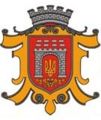
Chernivtsi in details
Chernivtsi, which is located on picturesque hills, which with their terraces go down the valley of the Prut River, belongs to the most beautiful cities of Ukraine. It is assumed that its name comes from a crowded city-fortress on southern borders of the Galician state that was called “Chern” or “Black Town”. Perhaps, this name is taken from fortress’ black oak walls laid with black earth, which was completely destroyed by the Mongol conqueror Burundai, and whose inhabitants moved to the right bank of Prut in 1259. Since 1359 the city became part of the Moldovan state. The first written mentionings of Chernivtsi were found in the manuscripts of the Moldovan ruler Alexander the Good, which he gave to Lviv merchants October 8, 1408. Every year this date is celebrated as the official day of the city. At that time Chernivtsi was located on the crossroads of routes from the north¬west Europe and the Balkans and Turkey. In 1457 it became the venue of fairs and the administrative centre of the region, During its history Chernivtsi was several times destroyed, it was oppressed by the Ottoman Empire, in 1774-1918 it was part of the Austro-Hungarian Empire, and in 1918-1940 — that of Romania.
For centuries, under the influence of historical events, Chernivtsi has formed as a multinational and multicultural city. In the streets one could hear dialects in five languages: German, Romanian, Polish, Yiddish and Ukrainian. Apart from that, Armenians, Poles, Czechs, Hungarians, Russians lived here. However, under the Austrian authorities, till 1918, it was German that dominated. It was spoken apart from Germans by Jews (overall they constituted half of the population of the city) and partly by other nationalities. Each community traditionally had its national and cultural centres — elegant buildings in downtown. Every religious denomination built and maintained their temples. So it is not incidentally that a number of artists who embody and represent different national cultures come from Chernivtsi.
The heyday of the city began in 1778 when Duke Carl von Entsenberh was appointed the head of the Military Administration of Chernivtsi. He invited many merchants, craftsmen and industrialists so that they helped to develop trade and production. In a century and a half, Chernivtsi transformed from an ordinary town on the outskirts of the Austro-Hungarian Empire into the world model of urban planning. Today, historical and architectural heritage of the ancient city is a holistic, almost untouched ensemble of the first half of the XlX and early XX c.
A masterpiece of the famous Czech architect Josef Hlavka — the former residence of Bukovynian metropolitans (1864-1882) is considered to be the most farming old architectural building of Chernivtsi. Today is houses the main building of Chernivtsi National University named after Y. Fedkovych. The residence complex is a unique ensemble, for the construction of which brick and ceramic factories, quarries for stone extraction were needed. It was mainly Bukovyna Orthodox religious foundation that financed the construction of the residence. In its building scale the complex had no analogues in Bukovyna. Huge amount of money was invested in it — 75 million guldens. The Metropolitan Ensemble residence consisted of three no analogues in Bukovyna. Huge amount of money was invested in it — 75 million guldens. The Metropolitan Ensemble residence consisted of three monumental buildings: metropolitan Ensemble and monastery one.
The Metropolitan Building (now the central (5th) University building, where the University Administration and the faculty of Foreign Languages are located) consisted of spacious apartments, where the metropolitan worked and rested, and luxurious rooms where audiences for distinguished guests took place. Visitors were especially amazed in the main building at Synod Hall decorated with marble and furnished with side column galleries (its present name is Marble Hall), with colourful wooden ceilings painted with rich ornamentation. Not less beautiful is the former meeting room of the Holy Synod, known today as Red Room, which has remained almost intact. The impression of ethereal majesty of the metropolitan building is also enhanced by the corridors, lined with marble mosaic, with dome-shaped ceilings. is the Seminary Church of the Bukovynian metropolitans residence. With the help of passages it is connected with the seminary building. Both, the exterior and the interior impress with their architectural plastics of the church form, skillfully created in eclectic style of Roman and Byzantine architectural motives. At the entrance into the church there is an impressive iconostasis, which consists of 5 layers and contains icons in accordance with the Orthodox Church canons.
In the Soviet period, when the place of worship was closed, the administration of the university managed to keep great paintings and iconostasis from destruction.
The left wing of the ensemble — the monastery building (today the fourth building of the university) can be recognized by a high multilayer tower with a clock.
Apart from the metropolitan residence, Hlavka almost simultaneously built another wonderful creation in Chernivtsi – Armenian Catholic St. Peter and Paul Church (1872-1875), in which elements of Roman, Byzantine and Gothic styles, particularly characteristic For the medieval Bukovyna monasteries, were originally combined with the traditions of Armenian religious architecture. Due to superb acoustics of the temple, it was initially used as a concert hall: evenings of church songs, music, and organ were held here.
Most architectural monuments of the city are located within densely built perimeter area, forming the ensembles of O. Kobylianskoi, I. Franka, Bohomoltsia, Holovna (Main) Street, etc. Apart from that, they also include some other representative buildings — in addition to former residence of Bukovyna metropolitans: the City Hall, city theatre, art museum, the Cathedral of the Holy Spirit. Regional State Administration etc.
The administrative center of Chernivtsi is its lofty building of the City Hall (1843-1848, architect Mikulich), located in former Ringplaz now known as Central Square. Nowadays, every day at noon can hear the horn Slower playing the melody of a famous Ukrainian song “Marichka” from the balcony of the City Hall.
Opposite the City Hall is the pearl of Viennese Secession in Chernivtsi — the building of the administration of Bukovyna Savings Bank, now Chernivtsi Art Museum. It was built by the project of Azenberg by the architect Hubert Hessener in 1900-1901. On the outside, if is decorated with majolica panels depicting allegorical figures, which economic prosperity of the land and of the whole Danube monarchy, which was created 1904 by the artist I. Lana. This mythological composition represents a parallel between the Roman and Austro- Hungarian Empire during the reign of Emperor Franz Josephs. In the images of 12 Olympus gods 12 main provinces of the empire are depicted. The building is impressive with its exquisite beauty of interiors, the design of which skillfully combines sculpture, painting, pottery, stained glass, and art metal. A well-known Ukrainian artist Mykola Ivasiuk participated in the internal decoration. It was him who created the painting with mythological plot, and which has adorned the ceiling of the museum up till now. From Central Square, the main street in the city, O. Kobylianska Str., starts, with lines of magnificent buildings on both its sides. The most conspicuous of these is a magnificent stone building 0f 1898 with a graceful tower, which had in elegant name “Three Crowns”. During the Austrian period it housed an elite cafe “Gabsburg” (“Cafe Gabsburg”). Today it houses the administration of the National Bank of Ukraine.
One of the most original buildings in Chernivtsi is the so called ship-house, or “shifa” (from Germ, Schiff). Indeed, this building seems to cut into the space of the Holovtna (Main) Street. In fact, once a tavern “Under a golden ship” was located over here. The idea to build a house in the form of a ship was that of two Austrian captains. On the second floor of the building there were two captain bridges and two steering wheels. In the fore part of the building, there are a head of a lion, griffin the symbol vigilance, as well as dolphins, and algae. A fountain with a lion head was the sole place where in times of Romania one could drink water for free. In the most spectacular square of the city, Teatralna (Theatre) Square, one of the most famous pearls of architectural ensemble of Chernivtsi dominates — the building of regional musical-drama theater named after Olha Kobylianska. It was designed by famous Viennese architects Helmer and Kellner in 1905, and in its architecture and interior it is not inferior to the best European theaters. Leading opera and drama singers of Europe: Enrico Caruso, Feodor Chaliapin, Solomiya Krushelnytska, Maria Bieshu and others have performed in the Chernivtsi Theatre. On pedestrian paths of Teatralna Square, there is the City Fame Alley, where stars with names of outstanding people of Chernivtsi are mounted into the stones. The building of the Jewish National House, Judischeshaus (1908), is located opposite the theater. The facade of the building is decorated with stone statues of Atlanteans, the halls in the interior are decorated with stucco, and on the first floor visitors can encounter two stone lions. Forged railing stairs of the Jewish House are decorated with Stars of David. In Soviet times two rays on each star were gently filed off and in 1990s they were welded. In one of the oldest and longest streets of Chernivtsi — Ruska Street, #28, there is the Cathedral of the Dormition of Virgin Mary. It was built in 1820-1821 on the place of the predecessor church and became the first stone church in the historic downtown, which represented Ukrainian Greek Catholic Church (UHKTs). Having survived over hundred years, during 1930-1936 the temple was substantially rebuilt. Then the altar of the miraculous icon of Our Lady of Chernivtsi “The Hope of the Hopeless”, which was the place of pilgrimage and worship of believers, was set.
During Soviet rule chemicals were long kept in the church, causing all the wall paintings to suffer irreparable damage. Only the iconostasis miraculously survived.
Slightly below the Assumption Cathedral, on the left side of Ruska Street, #35, there is another church, which represents another integral part of the multicultural heritage of old Bukovyna. It is the brick Orthodox Church of St Nicholas, whose construction was completed in 1939. Its original «twisted» steps of the domes indicate the link with Romanian religious architecture. The church model in Chernivtsi was one of the masterpieces of medieval architecture in Romania — the temple of the mid XIV in Curtea de Arges. In the northern part of the temple is a shrine with miraculous relics of St. John Suceava.
One of the most important sacral monuments of Chernivtsi is, of course, the wooden church of St. Nicholas. It was most probably built in 1607, and in the XVIII c. it underwent reconstruction. The church does not look any different from an ordinary house, and only if scrutinized, some differences may be observed. This is explained by the fact that after the invasion of Moldova and Bukovyna in 1514, the Turks forbade to build high domes, so Bukownian craftsmen had to build churches or “house” type. Another temple of this type, the one of Assumption (1735), is located in Chernivtsi, in former suburb Kalichanka.
The Cathedral of the Holy Spirit (the architect Rollia with the participation of Marina and J. Hlavka), which is located between Holovna (Main) Str. and O.Kobylianska Str., is certainly also one of the best buildings of the city. The foundation stone of tne cathedral was laid July 3, 1844. The construction lasted intermittently up to 1864. However, internal decoration work continued till the end of the century. The main Bukovyna Orthodox Metropolitan Cathedral was built in classical style for the commission of Orthodox Religious Foundation. The first metropolitan Eugene Hakman took active part in the construction. Besides the above described architectural monuments of Chernivtsi, if you have enough time, it is worth seeing the buildings of the German Peoples House (1910) (now it houses the Austro-German culture society «Renaissance»), the Roman Catholic Church of Exaltation of the Holy Cross (1787-1814), the Church of St Paraskeva (1844-1862), the Neo-Gothic Jesus Heart Church (1891-1894), the House of Justice (the architect Skovronna, 1904-1906), the post office building (1855), the Jewish Synagogue (1877), the railway station (1908), the Nature Museum founded back in 1863, and the museum of folk architecture and household.
Top places of Chernivtsi
Chernivtsi is a very cozy and beautiful city with unusual and refined architecture preserved from the times when the city was a part of the Austria-Hungary. You can start your acquaintance with this European city in the land of Ukraine with its main square, Central Square.
The town hall has a special place in the square. It was built in 1843-1847 in the style of late Classicism. The three-storied building is topped by a chime-clock tower so traditional for town halls and an observation platform that gives you a really wonderful and detailed view of the whole Chernivsti.
In the square, there is a beautiful building now occupied by a museum of art. Designed by H. Gessner and built in 1901 for a banking board, it is still considered one of the best specimens of Vienna secession in the world. A huge majolica panel, representing regions of the Austro Hungarian Empire as antique gods, decorates the building. Because of this pantheon, it was dubbed “Olympus”.
The Olga Kobylianska Theater of Music and Drama in Chernivtsi is famous far beyond its home region, and it is one of the most beautiful theaters in Ukraine. It can be considered equal to many splendid theaters of Europe. The theater was built in 1904-1905 by the project of well-known European theatrical architects F. Felner and H. Gelmer. By that time they had already designed the famous Theater of Opera in Odessa and a number of European theaters. Groups of sculptures decorate the facade of the building, and its interior is furnished in the baroque tradition by Czech artisans.
The main sight of Chernovtsy is the complex of the Chernivtsi University, which is a real wonder of architecture. It is no exaggeration, for the building combines features of Mauritanian, Byzantine, Roman styles and folk art traditions of Bukovyna in a single unity. Here there are so many unexpected and interesting details that it may take long hours to become really acquainted with this work of art. Moreover, the interior of the university is as/good as its splendid appearance from the outside.
The university in Chernivtsi was founded in 1875 thanks to enthusiastic attitude of the Bukovyna Metropolitan Evgeniy Gakman. The architectural ensemble included the metropolitan’s residence and educational buildings. The project was created by a young Czech architect Jozhef Glavka, while Viennese, Czech and Bukovyna painters and artists helped decorate the buildings.
The ensemble of the university itself consists of three buildings, a majestic Seminar Church and a cozy park.
We wish you a pleasant stay in Chernivtsi.




